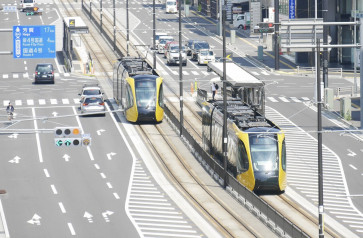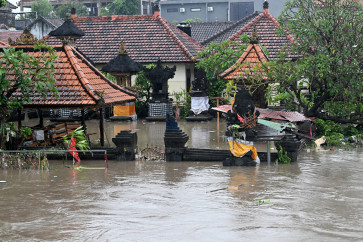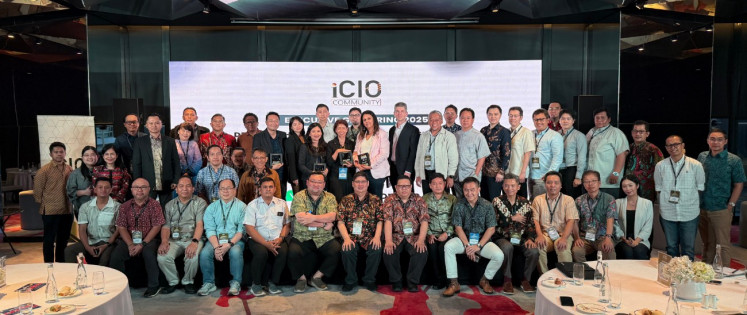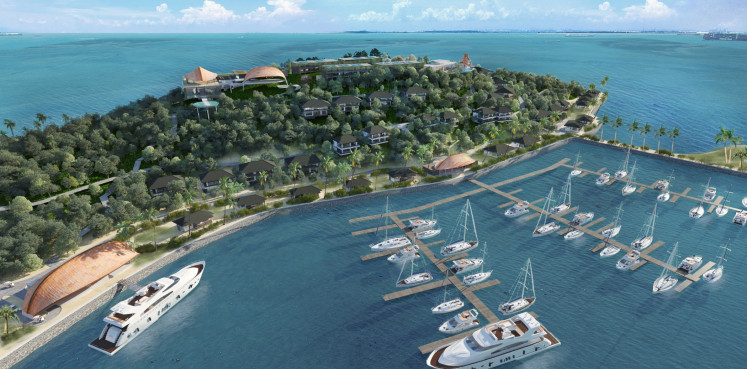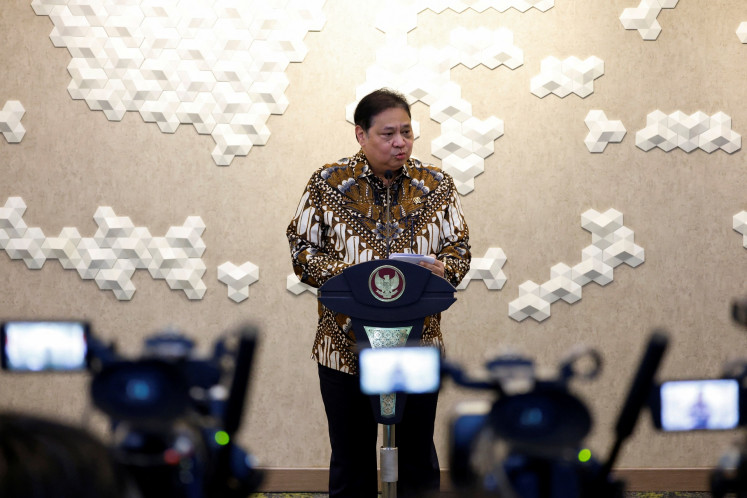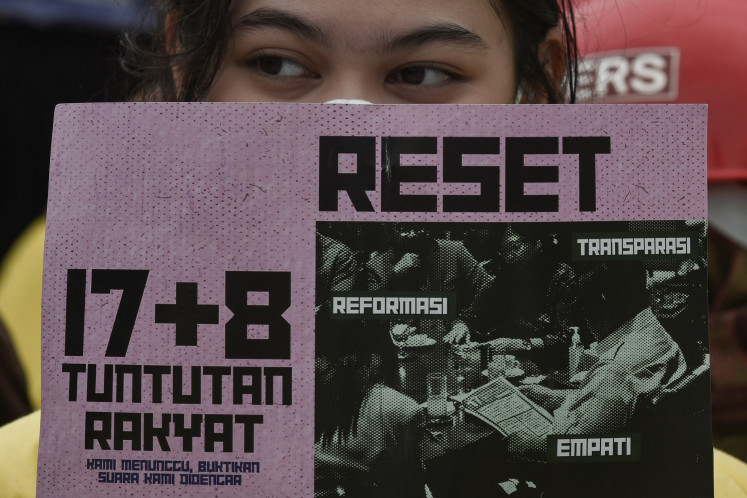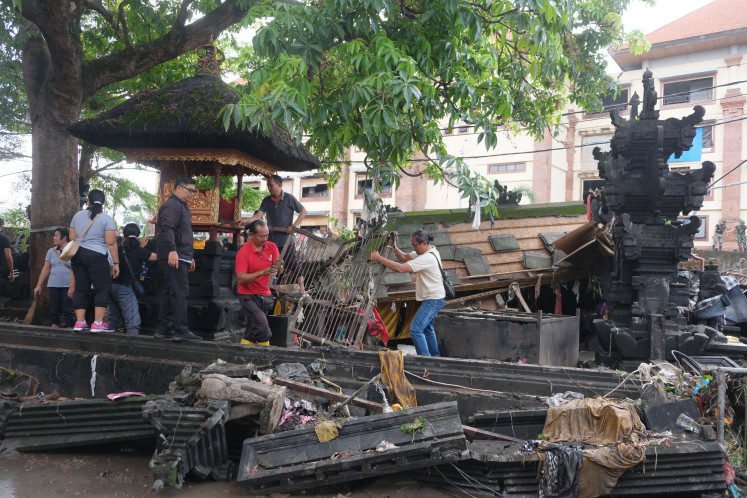Popular Reads
Top Results
Can't find what you're looking for?
View all search resultsPopular Reads
Top Results
Can't find what you're looking for?
View all search resultsIndonesia's achievements at the 3rd WCDRR Sendai: Managing risks on an archipelago
One of the challenges facing Indonesia is its territorial characteristic of being an archipelago composed of thousands of islands
Change text size
Gift Premium Articles
to Anyone
One of the challenges facing Indonesia is its territorial characteristic of being an archipelago composed of thousands of islands. It is a type of territory that is more at risk of disaster than continental countries. Indonesia has coastal areas and small islands with natural diversity, natural resources and diverse cultures.
The spread of the country's territory makes it a challenge to make resources, data and information accessible. In relation to the disaster risk that was in the recent, the planning, execution and monitoring process needs more specific efforts to reach standard qualifications at the national level.
Another challenge is the anthropogenic influence associated with the development process, political interests, leadership, infrastructure development, environmental issues, good governance, corruption, poverty eradication and law enforcement. This includes the potential environmental damage that can lead to disaster. The development process also implies a change of land use, land conversion, reduction in the carrying capacity of the environment, spatial inequality, spatial conflicts, space-based risks, landscape alteration and the destruction of cultural heritage areas. Other intangible impacts may be cultural and social, economic and mental degradation in the face of globalization.
In an effort to include some of the conceptual frameworks on disaster risk reduction from Indonesia in a UN document, the National Disaster Mitigation Agency (BNPB) has carried out numerous discussions with stakeholders. The process was carried out actively via negotiations and proceedings at the global level together with the Foreign Ministry and permanent representation in Geneva. There are nine points covering all the big issues.

The first point is integrating Disaster Risk Reduction (DRR) into the government policy of decentralization, with the involvement of local governments and participatory development. It means involving the DRR National Platform in the network of coordination between stakeholders in Indonesia (government, academia, NGOs, private sector, and the media) to give authority and responsibility of DRR national policy to local governments. It means supporting DRR programs to the level that is implementable in local areas, which can directly impact society and the development of infrastructure in view of the fact that the archipelago is widespread and has specific characteristics.
Second is to develop livelihood approaches to build community resilience to disasters. Livelihood components related to assets, access and community activities are important aspects of building resilience. A livelihoods-based approach can be used as an assessment tool to determine demographic information data qualitatively and quantitatively to improve toughness.
Third, knowledge, science, education and technology must support policymaking and increase community resilience. The integration between professional researchers, academia, scientists, and experts on the basis of DRR will maintain sustainable development and support policy making, thus increasing capacity and building awareness levels to improve human rights.
Fourth, a trans-disciplinary DRR approach includes disaster mitigation efforts in the dimension of spatial planning, environmental management and livelihoods. It combines the problems to integrate DRR with many dimensions. This joint collaboration program should be implemented based on the spatial and temporal aspects. It can also be integrated between climate change, disaster management and environmental management.
Fifth, build resilience by strengthening the relationship between the rural and the urban. The relationship between rural-urban linkages will increase economic activity and enhance community resilience. This association will support the efforts for regional development with a DRR-based approach. For example, food security, infrastructure, industry and the involvement of the private sector, youth and education, social relationships, etc. can all support DRR in the region and make the region resilient to disasters.
Sixth, increase financial budgeting and investment for DRR at all levels. Financial budgeting is very important in DRR programs and activities, and should be directly coordinated by the government to involve the private sector and other institutions while setting out in clear government policy instruments. Link the issue of problems in the environmental field and DRR into incentives and policy instruments. Incorporate aspects of DRR investment in making businesses support the social economy. Increase the economic potential of local financing mechanisms. Support democratic economy in the region. Its application can be in the concept of a funding mechanism for disaster relief funds for DRR, presidential decrees and emergency responses to rehabilitation and reconstruction.
Seventh, traditional knowledge, spiritual knowledge, religion, and indigenous knowledge are powerful resource assets and are a form of investment in DRR for community resilience in the future. Strengthening partnerships (governments at national and local levels, communities, donors, academia, institutions, and experts) that preserve traditional knowledge, culture and heritage form a firm basis for increasing the toughness of communities in the face of disaster.

Eighth, nationalist and populist approaches when it comes to DRR are a part of human rights. Reform the structure of bureaucracy and public policy on the basis of the nation's identity and for national pride. National security will evolve through a mental revolution and the spirit of everyone participating. Involve government agencies with all stakeholders to create consensus and support civil society.
Ninth, network optimization on international issues and cross borders for better sustainable development. Strengthen international cooperation to face the challenges of DRR to achieve sustainable development. This collaboration should be between stakeholders at all levels and also in relation to spatial cross-border cooperation.
From the results of the political negotiation process at the third WCDRR, many of the concepts that have been proposed from Indonesia can be accommodated in important documents of the UN. An important note from the Foreign Ministry is in line with the mandate given under UN General Assembly Resolution No. A / 68/211. The main focus is the formulation of WCDRR Framework for Action for Disaster Risk Reduction to replace the Hyogo Framework for DRR 2005-2015. With the passing of the Sendai Framework for Disaster Risk Reduction (SFDRR) 2015-2030, the international community will have a new action framework for DRR that will be a guide in DRR activities to 2030. As expected, the SFDRR finalization process cannot be done quickly considering the delegates continue to find it difficult to agree on pending paragraphs that have been discussed since the process started with the Preparatory Committee Meeting in Geneva during the period between July 2014 and Feb. 2015.
The priorities for the Indonesian delegation have been stated in the SFDRR 2015-2030. In addition, the trial has also produced a political declaration called the Sendai Declaration, which affirmed the commitment of the international community to continue prioritizing DRR issues. Both documents were the final documents adopted at the close of WCDRR on March 18.
In dealing with DRR in relation to sustainable development agendas, the Indonesian government will have the goal of reducing the Disaster Risk Index in growth centers located in hazard-prone areas by mainstreaming DRR into sustainable development at the national and local levels, reducing vulnerability to disasters and increasing the capacity of the central government, local government and the whole society in response to disaster.
With increasing population and assets in densely populated coastal areas and areas of high risk, the economic impact of a disaster can also be increased. Indonesia needs to address the challenges and risks of evolving to build cities and urban centers that are resilient to disasters. Governments need to strengthen DRR and the resilience of urban centers. It should begin by strengthening the regulatory framework in the development and management of risk sensitive investment.
The achievements of Indonesia's struggles in the broad framework of DRR as stated in UN documents are a form of success of which we should be grateful. Certainly, it is a daunting challenge in the implementation of programs. Implementing DRR will be a priority action when it comes to sustainable development in Indonesia for the foreseeable future. Disaster management with the characteristics of the archipelago that takes into mind cultural diversity and natural resources will certainly be a shared responsibility for all Indonesians to realize a resilient Indonesia.(+)



